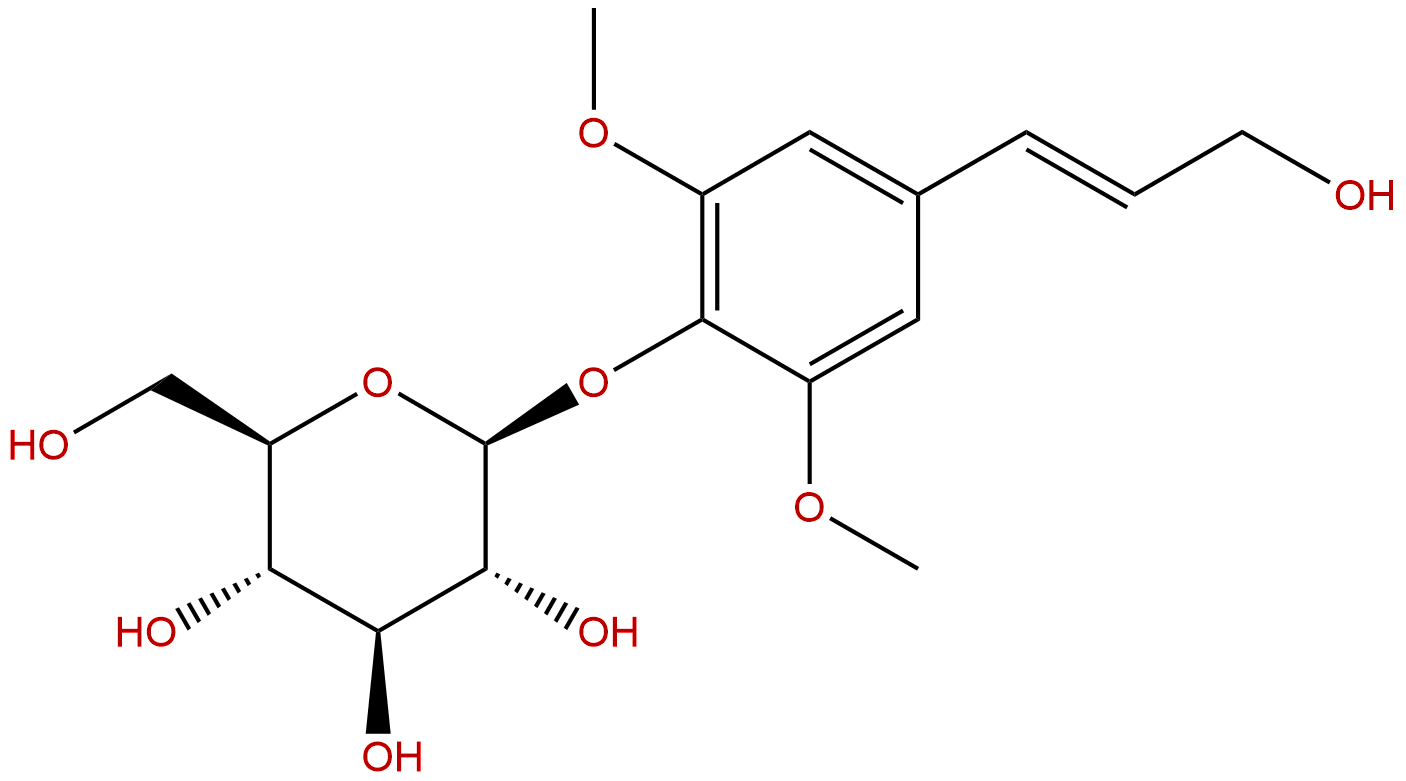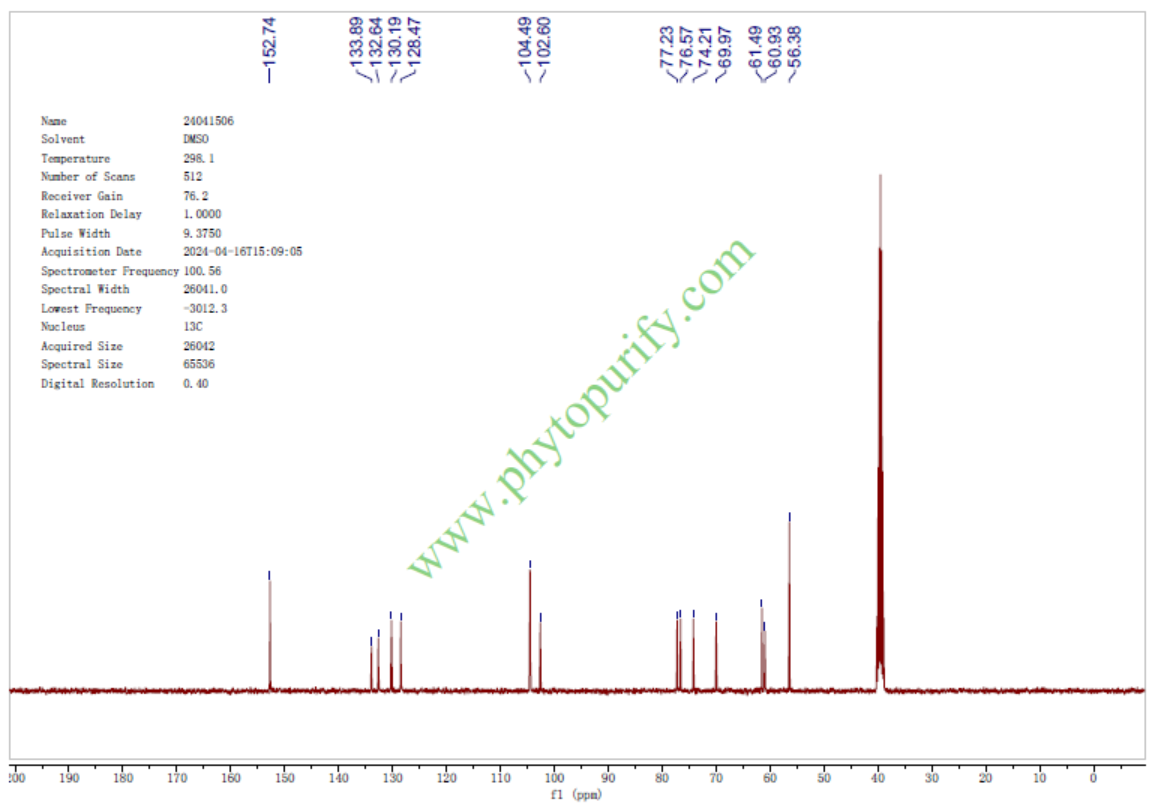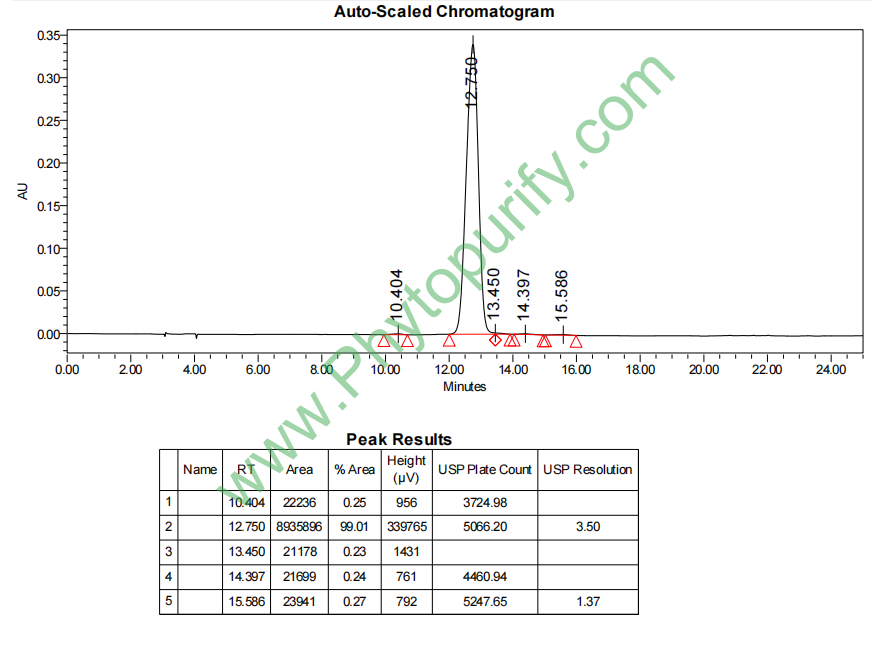
Eleutheroside BCAS No.:118-34-3
|
||||||||||
 |
|
|
||||||||

| Catalogue No.: | BP0525 |
| Formula: | C17H24O9 |
| Mol Weight: | 372.37 |
Product name: Eleutheroside B
Synonym name: Syringin; Lilacin; Methoxyconiferin; Magnolenin A; Alyposide; Syringoside; Ligustrin; Ilexanthin A
Catalogue No.: BP0525
Cas No.: 118-34-3
Formula: C17H24O9
Mol Weight: 372.37
Botanical Source: Eleutherococcus senticosus
Physical Description:
Type of Compound: Phenylpropanoids
Purity: 95%~99%
Analysis Method: HPLC-DAD or/and HPLC-ELSD
Identification Method: Mass, NMR
Packing: Brown vial or HDPE plastic bottle
Storage: Store in a well closed container, protected from air and light. Put into refrigerate or freeze for long term storage.
Whenever possible, you should prepare and use solutions on the same day. However, if you need to make up stock solutions in advance, we recommend that you store the solution as aliquots in tightly sealed vials at -20℃. Generally, these will be useable for up to two weeks.
The product could be supplied from milligrams to grams
Inquire for bulk scale.
Description:
Syringin (Eleutheroside B) has neuroprotective, tonic, adaptogenic, antitumour, anti- platelet aggregation, anti-inflammatory, antinociceptive ,and immune-modulating properties. It reduced the expression levels of inducible NO synthase (iNOS) ,COX,TNF-α, Beta Amyloid, and Caspase.
References:
Arch Pharm Res. 2010 Apr;33(4):531-8.
Syringin from stem bark of Fraxinus rhynchophylla protects Abeta(25-35)-induced toxicity in neuronal cells.
The medicinal herb Jinpi, derived from the dried stem barks of Fraxinus rhynchophylla belonging to Oleaceae is widely used as a variety of Korean folk remedies for anti-inflammatory, febricide, antidiarrhea, and antileukorrhea diseases.
METHODS AND RESULTS:
In the course of screening antidementia agents from natural products, F. rhynchophylla showed significant inhibitory activity toward Abeta(25-35)-induced neuronal cell death. An active principle was isolated and identified as Syringin.When the neuroblastoma cells were exposed to 50 microM Abeta(25-35), 3-(4,5-dimethylthiazol-2-yl)-2,5-diphenyltetrazolium bromide (MTT) reduction rate (survival rate) decreased to 60.21 +/- 2.16% over control while Syringin treated ones recovered cell viability up to 79.12 +/- 1.39% at 20 microM. In addition, 20 microM Syringin almost completely removed Abeta(25-35)-induced reactive oxygen species. The neuroprotective effect of Syringin seemed to be originated from the reduction of apoptosis since decrease in caspase-3 activity and expression, reduction in cleaved PARP, and DNA fragmentation were observed.
CONCLUSIONS:
These results suggest that F. rhynchophylla and Syringin are expected to be useful for preventing Abeta(25-35)-induced neuronal cell damage.
Fundam Clin Pharmacol. 2015 Apr;29(2):178-84.
Syringin may exert sleep-potentiating effects through the NOS/NO pathway.
Sleep is essential for basic survival as well as for optimal physical and cognitive performance in both human beings and animals.
METHODS AND RESULTS:
To investigate the effect of Syringin on sleep of anesthetized mice and the potential mechanisms, 35 male Kunming mice were randomly divided into six experimental groups (n = 5) and one control group (n = 5). Sleep latency and sleep duration, as well as nitric oxide (NO) content and nitric oxide synthase (NOS) activity, were determined after Syringin administration. The NO precursor l-Arginine (l-Arg) or NOS inhibitor NG-Nitro-l-arginine methyl ester (l-NAME) was administered alone or in combination with Syringin, and time for sleep latency and duration was recorded. After intragastric administration of Syringin, sleep latency decreased in a dose- and time-dependent manner, concomitant with increased sleep duration. The optimal sleep performance was obtained when Syringin was given at a dose of 80 mg/kg for eight consecutive days. Syringin significantly reduced NO concentration and NOS activity. Administration of l-Arg prolonged sleep latency and shortened sleep duration, and the effects were fully reversed by Syringin coadministration. Administration of L-NAME induced a significant reduction in sleep latency and a corresponding increase in sleep duration, and coadministration of Syringin further enhanced the effects.
CONCLUSIONS:
The finding of our study demonstrated that Syringin could exert sleep-potentiating effects on anesthetized mice in a time- and dose-dependent manner, and these effects may be intimately correlated with the NO/NOS pathway.
NMR of Eleutheroside B

HPLC of Eleutheroside B
